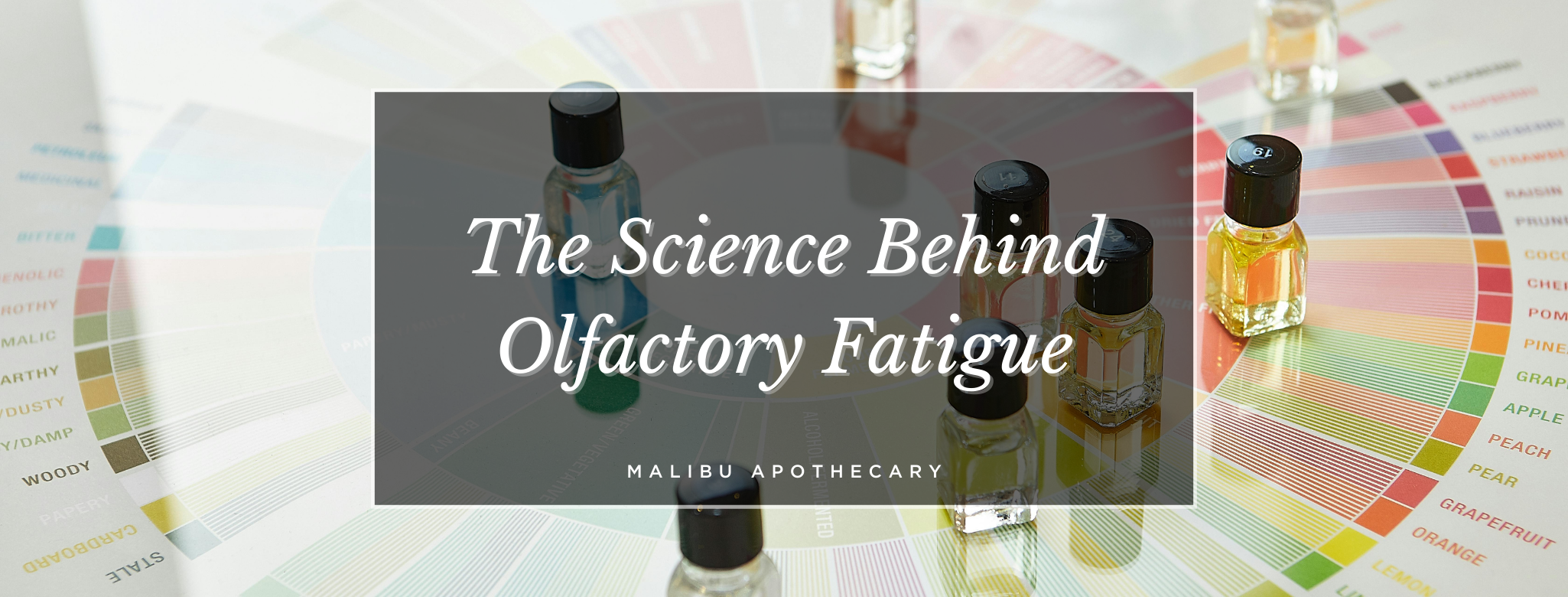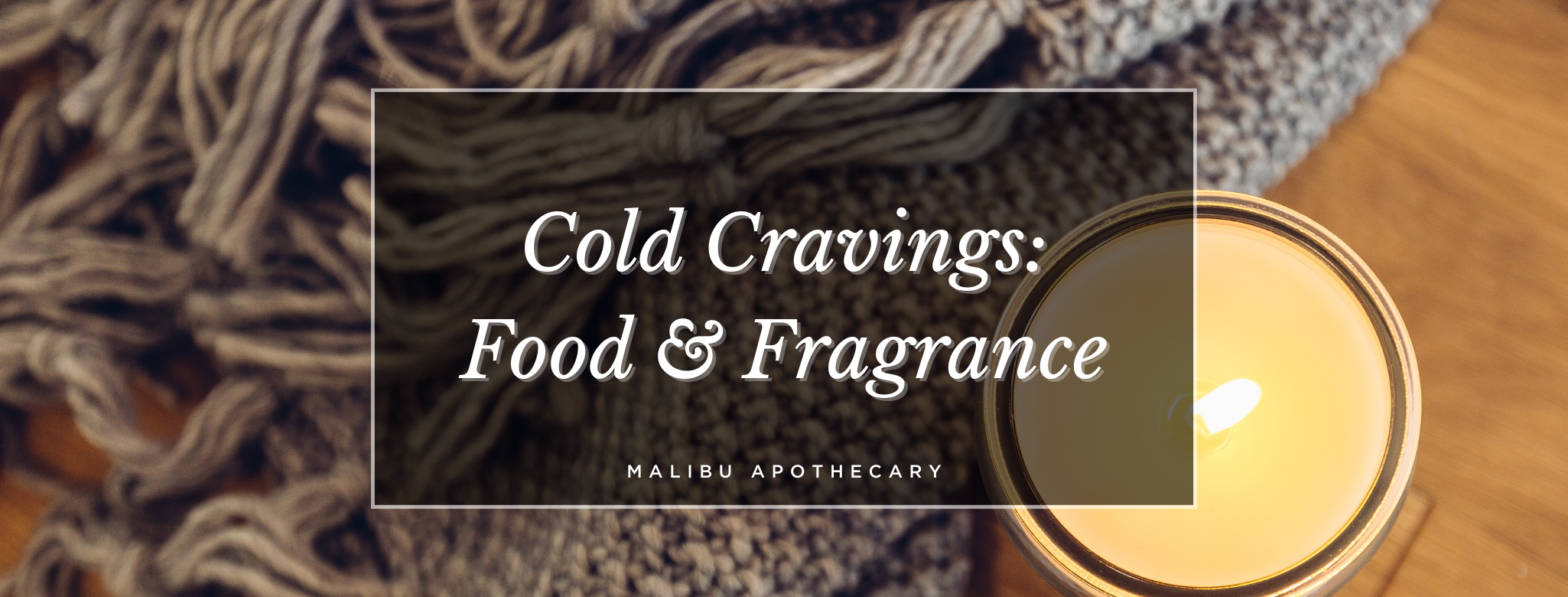Why Cold Weather Triggers Sweet Cravings
When the weather cools and daylight fades earlier, something subtle happens in both body and mind. Suddenly, that pumpkin loaf smells irresistible, and rich, creamy fragrances feel like a hug you can wear. These cravings aren’t coincidence, they’re your brain and senses responding to seasonal change.
Let’s unpack why colder months make us reach for sweets (in both taste and scent) and how you can work with those natural rhythms to create your own cozy rituals.
Your Sweet Tooth Has a Reason
As temperatures drop, your body works harder to stay warm, which means it burns more energy and instinctively craves foods that deliver quick comfort. Studies show that people naturally eat more calories in fall and winter, often gravitating toward richer, sweeter flavors. It’s a built-in survival signal from your metabolism.
At the same time, shorter days mean less sunlight, and less sunlight can lower serotonin, the “feel-good” brain chemical. When serotonin dips, many of us crave carbohydrates and sweets that offer a temporary lift. That warm cookie or peppermint mocha isn’t just delicious, it’s your body’s way of chasing warmth and contentment.
Comfort, Memory, and Mood
Beyond biology, there’s emotion. Sweet and spiced scents are often tied to memory. Like vanilla can remind you of baking with family, or cinnamon can evoke memories about past holidays and gatherings. As humans, we’re wired to connect scent and emotion; smell is the only sense directly linked to the brain’s limbic system, where memories and feelings live.
That’s also why fragrance can become an emotional ritual in winter. Lighting a candle that smells like amber, tonka, or clove can instantly signal “I’m home” to your brain. (If you’ve ever wondered why familiar scents fade after a while, read our Olfactory Fatigue post - your nose actually adapts faster than you’d think.)
Why Cozy Scents Just Feel Right
Cold air changes how scent behaves. Molecules don’t move as quickly in low temperatures, which means airy citrus or fresh marine notes don’t travel as far. Sweeter, denser notes like vanilla, amber, musk, and wood shine instead. They linger close to the skin and feel naturally warming. Perfumers know this; many craft “winter” fragrances with heavier base notes that bloom beautifully in cooler air.
How the Seasons Shift Our Senses
As daylight shortens, your circadian rhythm adjusts, often leading to slower mornings and a stronger pull toward rest, comfort, and grounding rituals. Fragrance plays a surprisingly powerful role here. Choosing notes that evoke warmth (like creamy sandalwood or spicy cardamom) can cue your brain to relax and reset. It’s aromatherapy without the clinical edge, just scent that meets the moment.
Practical Ways to Engage With Sweetness in Winter
- Food: Choose nutrient-dense but satisfying options, like baked root vegetables glazed with honey or oatmeal with cinnamon, that meet cravings while supporting health.
- Fragrance: Rotate into gourmand or woody perfumes that not only align with winter moods but also perform better in colder air.
- Daily Rituals: Try creating a small nightly routine like lighting a candle before dinner, or spritzing your favorite cozy scent before bed, or warming up your space with a diffuser blend of vanilla and amberwood. These sensory anchors help mark the transition from day to night and keep your environment as balanced as your mood.

Scent Pairing for the Season
Winter’s craving for sweetness doesn’t mean every scent needs to smell like dessert. It’s about texture: smooth, round, enveloping.
Here are a few ideas inspired by our signature palette:
-
Vanilla + Amberwood: soft, creamy, and gently nostalgic.
-
Cinnamon + Citrus: a lively blend that balances cozy with bright.
-
Cacao + Tonka Bean: sweet without being sugary, perfect for evening wear.
-
Cedarwood + Coconut: coastal warmth with a hint of escape.
(You can explore these notes in our destination-inspired collection or How to Use Candles for Better Feng Shui post for ideas on harmonizing scent with space and energy.)
The Science Says
Researchers have found that:
-
People tend to consume more calories (especially carbohydrates and sweets) in colder months, partly due to lower temperatures and shorter days.
-
Serotonin levels dip with reduced sunlight, fueling cravings for sweet foods and comforting aromas.
-
Temperature affects aroma diffusion. Cooler air slows lighter molecules, making heavier, sweeter scents feel cozier and more perceptible.
-
Market data shows fragrance sales spike in fall and winter, with gourmand and warm resinous notes leading seasonal trends.
These shifts remind us that craving sweetness (in food, fragrance, or feeling) isn’t indulgence; it’s instinct. Winter simply invites us to savor warmth in all its forms.
Resources
Arbisi, P. A., et al. (1996). Seasonal alteration in taste detection and recognition: Studies in seasonal affective disorder. Psychiatry Research
Green, B. G., et al. (2007). Heat activation of the TRPM5 channel explains enhanced sweet taste perception by warm temperatures. Journal of Neuroscience
Stelmach-Mardas, M., et al. (2016). Seasonality of food groups and total energy intake: A systematic review and meta-analysis. Appetite
Folwarczny, M. (2022). Seasonal Cues to Food Scarcity and Calorie Cravings. Appetite
Read more

The Mystery of a Vanishing Scent Have you lit your favorite candle and, at first, the room floods with fragrance? It's strong, beautiful, and utterly transportive. But an hour later, something str...

Ever wondered why stepping into a luxury hotel feels like entering another world entirely? It's not just the marble floors or crystal chandeliers—it's that invisible signature that whispers of poss...

Leave a comment
All comments are moderated before being published.
This site is protected by hCaptcha and the hCaptcha Privacy Policy and Terms of Service apply.